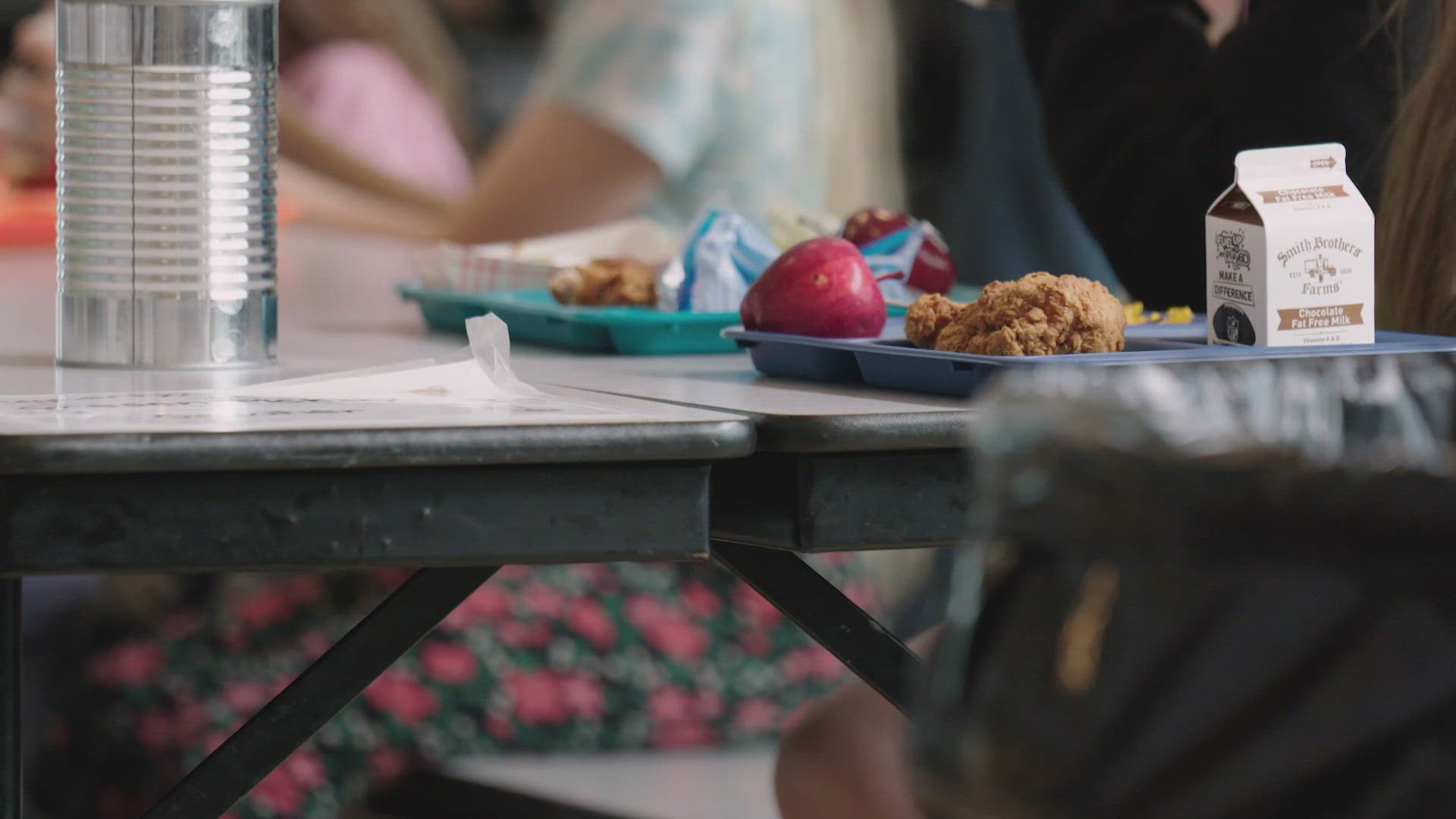EVERETT, Wash. — When school is out each day, food is the first order of business at Amber Ortega’s home.
“I had to eat my pizza really fast at school,” her daughter Rose said on a recent afternoon at the family’s house in Everett.
It’s the kind of comment that Ortega hears almost every day as she feeds her two daughters an after-school snack. “When my kids come home and complain about not being able to finish their lunch, it usually always just boils down to not having enough time,” she said.
On an Everett Schools Facebook page other parents called short lunch periods “ridiculous,” “frustrating,” and “chaos and bananas.”
Eight-year-old Mabel Ortega has a 20-minute lunch period at View Ridge Elementary School, which includes standing in the lunch line and clean-up afterwards.
Sixth grader Rose has an even shorter lunch period — just 15 minutes. “It’s harder to eat with that amount of time,” Rose said of her brief lunch break at Evergreen Middle School.
The U.S. Centers for Disease Control and Prevention and pediatric and nutritional experts say that’s not long enough for a kid to eat a nutritious meal.
“What our research shows is that when kids have 20-minute lunch periods they eat significantly less lunch on average, compared with kids that have longer lunch periods,” said Dr. Juliana Cohen, a professor and nutrition researcher at Merrimack College and Harvard University.
In 2015, Cohen’s research team recommended at least 25 minutes of “seat time,” the time that kids actually spend sitting and eating their food.
The KING 5 Investigators surveyed 31 western Washington school districts and found that most are woefully short of that recommended time.
Only five school districts have lunch periods of 25 minutes or more in all of their schools: Auburn, Bellevue, Blaine, Peninsula and Puyallup.
Five school districts did not respond to repeated requests from KING 5, including Bethel, Tacoma, Kent, Lynden and Hockinson. Nineteen school districts reported at least one school with a 20-minute lunch period, mostly in elementary schools. Two districts have schools with 15-minute lunches: Stanwood-Camano and Everett.
Dr. Cohen and her team used stopwatches to calculate student’s “seat time” during their research on lunch nutrition.
School lunch time crunch
KING 5 sent 11-year-old Rose into her school with a stopwatch to determine the actual “seat time” during her 15-minute lunch period.
Rose’s log shows that she had only 8 minutes and 21 seconds to eat her food on Nov. 8, the shortest time. After two weeks of logging, she averaged 10 minutes and 22 seconds of seat time each day in between standing in the lunch line and cleaning up her tray.
“When kids have longer lunch periods, they go back to class more refreshed and more able to learn,” said Dr. Cohen.
Matt Bennett is the principal of Gateway Middle School, one of two Everett schools with a large sixth grade class. That means that a regular half-hour lunch period is split in two, to fit all the kids in the cafeteria. He says with two five-minute “passing periods” on either side of the lunch break, kids do get enough time to eat.
“We still manage to get through all of our students, and they have ample time to buy their food and eat their food before that free time,” Bennett said. He said he has heard complaints from some parents, but that the school finds a way to make more lunch time for kids who need it.
“We’re all here to help kids,” he said.
Administrators in other school districts say they are having a harder time in recent years scheduling lunch periods. This year, a new state rule requires districts to give elementary students at least 30 minutes of recess a day. That’s why so many elementary schools in KING 5’s survey reported 20-minute lunch periods. With class time and learning requirements lunch period is the one place where administrators have flexibility.
Some districts also said that increased availability of free and reduced lunches has lengthened the lines in the cafeteria, reducing the “seat time” for some students.
The result is that children are eating the most desirable items on their trays, and throwing the nutritional side dishes away. Rose logged items like fresh strawberries, apples and rice that went into the garbage can instead of kid’s stomachs.
Dr. Cohen said that’s one tragedy of shortened lunch periods, that the time and money used to craft healthy lunch menus is going to waste. “We want to make sure that kids are eating as much of their healthy meals as possible,” she said.
The Washington Office of Superintendent of Public Instruction is proposing a rule change that would require school districts to set a minimum lunch time, likely 20-minutes of seat time. But officials expect pushback from many school administrators who say carving out time from busy school schedules will be a hardship. A public hearing will be set before a decision is made.
Dr. Cohen’s team is in Anchorage, Alaska, right now studying whether the district’s change to 30-minute lunch periods results in better academic achievement by students will full bellies. She hope the results will convince more districts to extend lunch time.
“I know my kids would certainly be pleased,” said Amber Ortega. “And I wouldn’t have to hear at the end of the day that they were starving and weren’t able to finish their lunch.”

